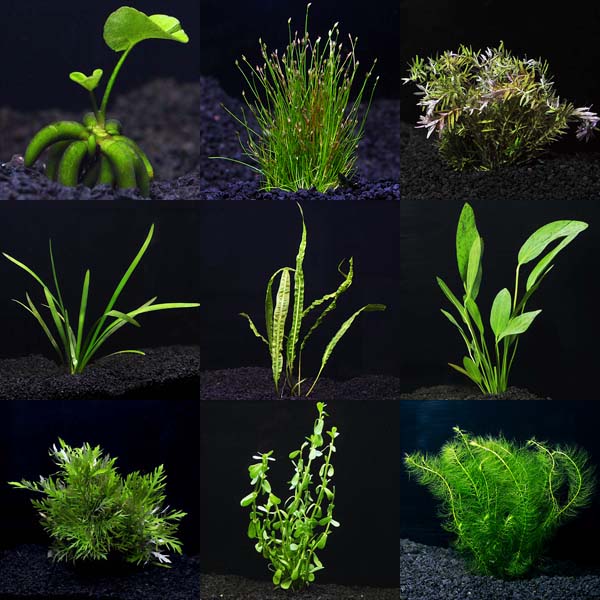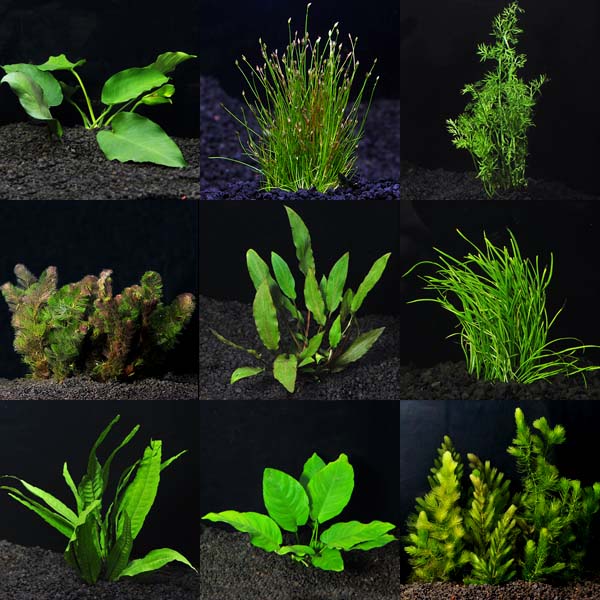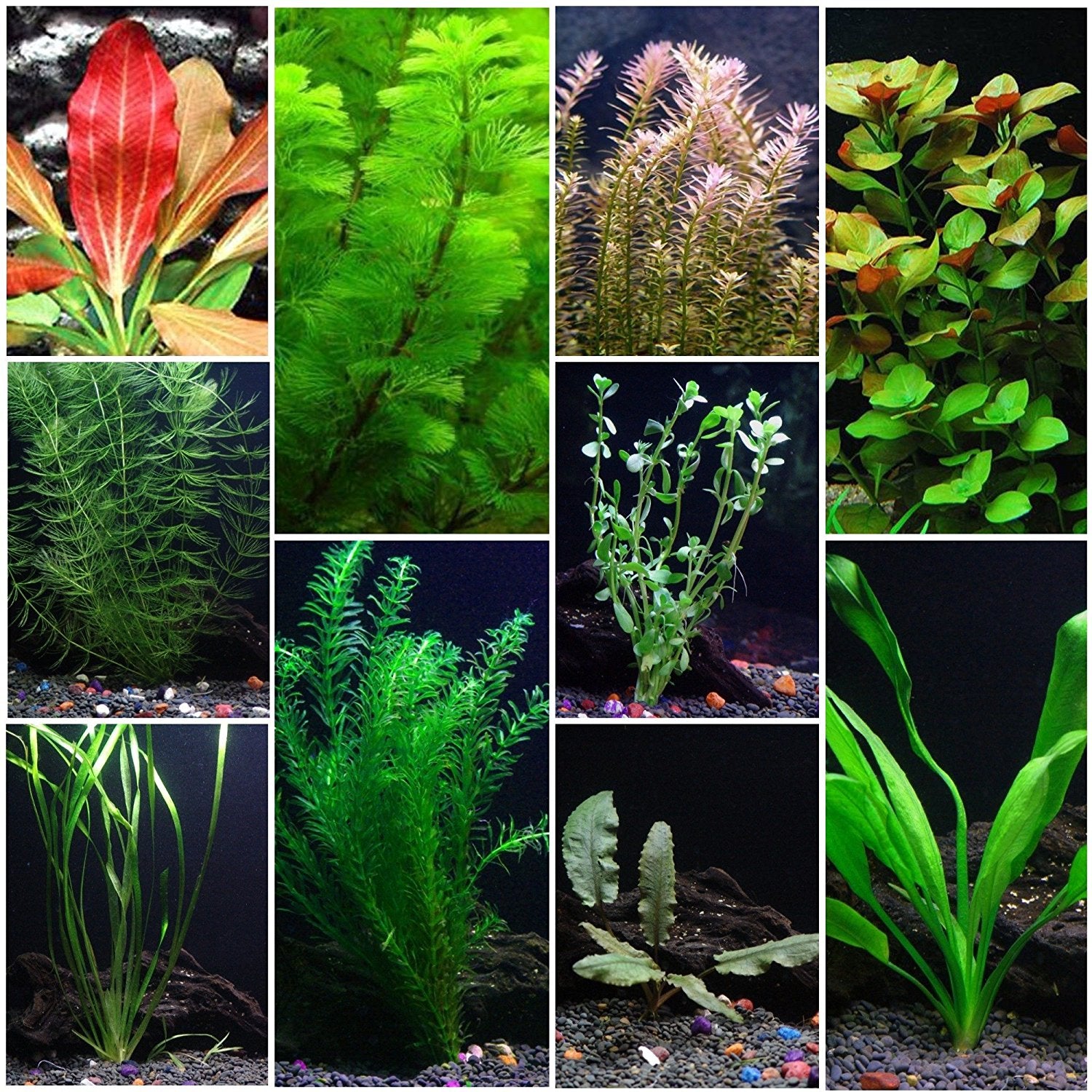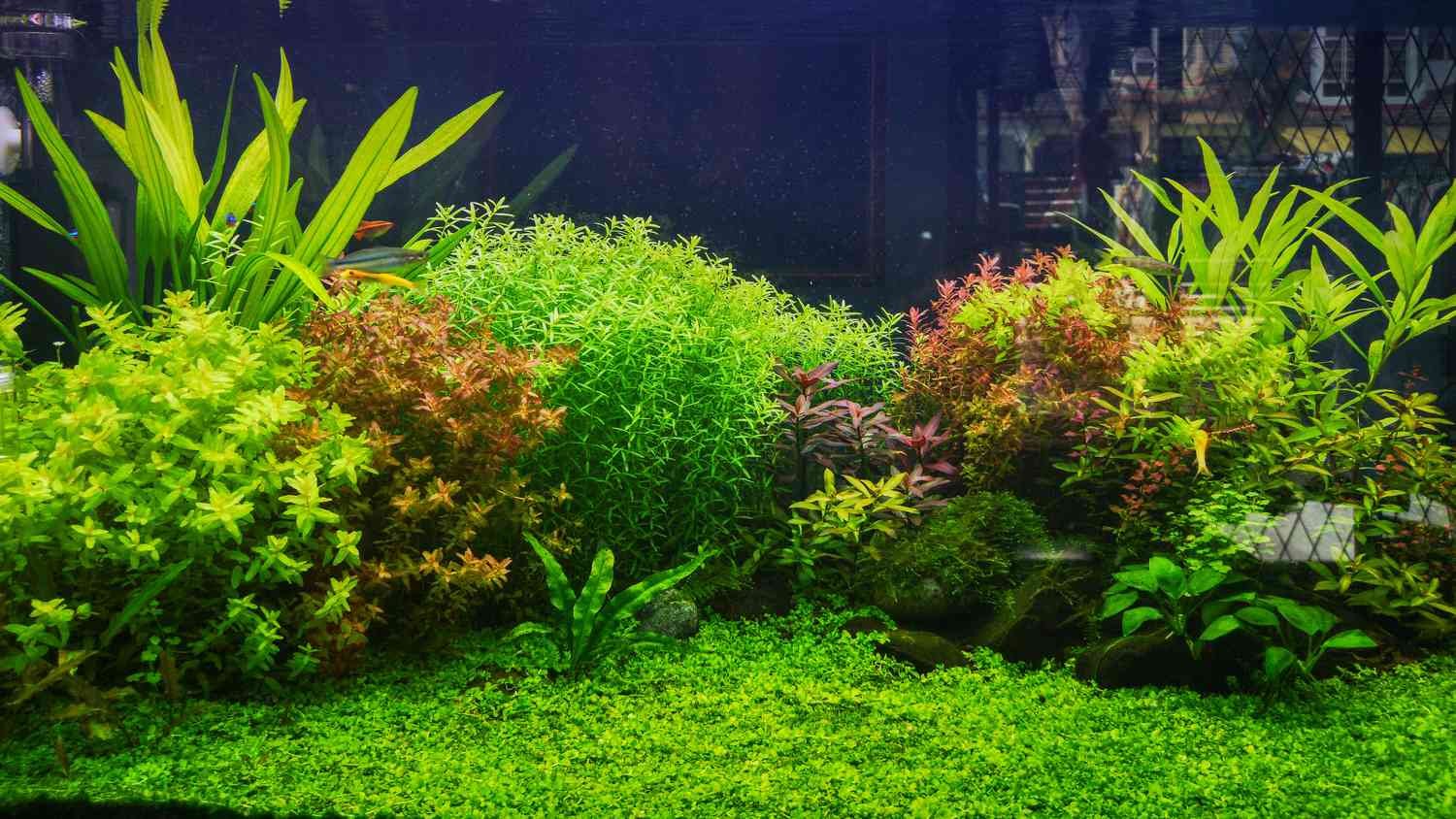Aquatic plants breathe life into freshwater ecosystems. They offer beauty and balance.
These plants, thriving in ponds, lakes, and rivers, play a crucial role. They provide shelter, food, and oxygen to countless creatures. Their presence enriches biodiversity and supports delicate ecological systems. Understanding these plants opens a window to nature’s wonders. They vary in size and shape, from tiny algae to large lilies.
Each type contributes uniquely to its environment. Aquatic plants help maintain water quality by filtering pollutants. They stabilize sediments and prevent erosion. Observing them reveals insights into water health and ecosystem dynamics. These plants are not just scenery; they are vital to freshwater health. As we explore their world, we uncover the secrets of sustainable aquatic habitats. Their vibrant existence is essential to life below and above the water.

Credit: www.liveaquaria.com
Types Of Aquatic Plants
Various types of aquatic plants thrive in freshwater environments. Floating plants like water lilies rest atop the water’s surface. Submerged plants such as elodea grow entirely underwater, providing oxygen. Emergent plants, including cattails, rise above water levels, aiding in shoreline protection.
Aquatic plants are the hidden gems of freshwater ecosystems. They come in various types, each playing a unique role in the aquatic environment. Understanding these types can enhance your appreciation for these vital components of nature. Whether you’re an avid gardener or simply curious about the natural world, diving into the types of aquatic plants can be a fascinating journey. Imagine a peaceful pond in your backyard, adorned with these diverse plants. How would it transform your space?Floating Plants
Floating plants are like a natural blanket on the water’s surface. They don’t need soil to thrive, making them easy to manage. Think of water lilies or duckweed—these plants float effortlessly, adding beauty to ponds and water gardens. They provide shade, helping control algae growth and offering shelter to fish. You might notice how they create little islands in the water. These islands can become a haven for small aquatic creatures. Have you ever watched a frog leap from a lily pad? It’s a simple delight that never gets old.Submerged Plants
Submerged plants live entirely underwater, often anchoring themselves to the bottom. They play a crucial role in oxygenating the water and providing habitat for aquatic life. Common examples include eelgrass and hornwort. These plants can be a game-changer for anyone looking to maintain a healthy aquarium or pond. They help keep the water clear by absorbing excess nutrients. Picture a fish weaving through the dense foliage of submerged plants—it’s a mesmerizing sight. Could these plants be the secret to a thriving aquatic environment in your own space?Emergent Plants
Emergent plants stand tall, with their roots underwater and stems above the surface. They are often found near the edges of ponds and rivers. Cattails and bulrushes are popular emergent plants, known for their striking appearance. These plants provide essential nesting areas for birds and insects. Have you ever considered how these towering plants can create a vibrant ecosystem just outside your door? Their presence can encourage biodiversity and bring a touch of wilderness to your garden. What wildlife might you attract by adding emergent plants to your water feature? By understanding these types of aquatic plants, you can create a balanced and thriving freshwater environment. Each type offers unique benefits and beauty, making them a valuable addition to any water garden or natural pond. Dive into the world of aquatic plants and discover the wonders they can bring to your space.Benefits For Aquariums
Freshwater aquariums thrive with aquatic plants. They enhance water quality and reduce algae growth. Fish feel secure hiding among lush leaves, creating a vibrant ecosystem.
Aquatic plants are not just beautiful additions to your freshwater aquarium; they offer a multitude of benefits that can enhance the health and vibrancy of your aquatic ecosystem. If you’ve ever marveled at the lush greenery in an aquarium and wondered about its purpose beyond aesthetics, you’re in for a treat. These plants are silent workers, providing essential services that improve the environment for your fish and overall aquarium setup.Oxygen Production
Aquatic plants are excellent oxygen producers. During photosynthesis, they release oxygen into the water, which is vital for your fish’s survival. Imagine an aquarium without plants; the oxygen levels could drop, stressing your fish and other organisms. By adding aquatic plants, you naturally boost oxygen levels, ensuring a healthier habitat for your aquatic pets.Natural Filtration
Think of aquatic plants as your aquarium’s personal cleaning crew. They absorb excess nutrients like nitrates and phosphates, which can otherwise lead to algae overgrowth. If you’ve ever struggled with murky water, plants might be your answer. Their roots help stabilize the substrate, preventing debris from clouding the water. This natural filtration keeps your aquarium clear and reduces the need for artificial filters.Habitat For Fish
Aquatic plants offer shelter and breeding grounds for fish. They create a safe haven where fish can hide from predators or aggressive tank mates. Have you noticed your fish darting in and out of plants? They often find comfort in these leafy retreats. Plants also provide surfaces for egg-laying, supporting the natural breeding habits of many species. This not only enhances the aquarium’s biodiversity but also creates a dynamic and engaging environment for you to enjoy. Are you considering adding aquatic plants to your aquarium? Think about how these green wonders can transform your aquatic world into a thriving ecosystem.Choosing The Right Plants
Choosing the right aquatic plants for your freshwater aquarium can make a big difference. The plants’ health and growth depend on suitable conditions. Each plant has its own set of requirements. Understanding these can help create a thriving aquatic environment.
Light Requirements
Light is crucial for plant growth. Some plants need bright light. Others thrive in low light. Knowing the right light level is essential. This ensures healthy plants. Choose plants that match your aquarium’s lighting setup.
Water Temperature
Water temperature affects plant growth. Some plants prefer warm water. Others do well in cooler temperatures. Check the ideal temperature for each plant species. Ensure your aquarium settings match these needs. This supports plant health and vitality.
Compatibility With Fish
Fish and plants share the same environment. Some fish eat plants. Others might damage them. Choose plants that are safe with your fish species. This prevents harm to plants. Your aquarium ecosystem stays balanced and healthy.
Planting Techniques
Growing aquatic plants in freshwater involves careful placement and proper substrate choice. Light conditions play a crucial role in their health. Regular maintenance ensures a thriving aquatic environment.
Planting aquatic plants in freshwater aquariums can be rewarding. Proper techniques ensure healthy and thriving plants. Consider substrate, planting depth, and spacing for optimal growth. Each factor plays a vital role in plant health.Substrate Selection
The substrate is the foundation for your plants. Choose a nutrient-rich substrate. It supports root growth and nutrient absorption. Gravel, sand, and specialty substrates are popular choices. Consider the type of plants you have. Some need specific substrates for best results.Planting Depth
Correct planting depth is crucial. Too shallow, and roots may not anchor well. Too deep, and they may struggle to reach light. Generally, roots should be just below the substrate surface. This allows easy access to nutrients. Ensure leaves are above the substrate for photosynthesis.Spacing Considerations
Spacing affects plant health and aesthetics. Crowded plants compete for light and nutrients. Leave adequate space between each plant. This encourages healthy growth. It also allows for easy maintenance. Consider future growth and adjust spacing accordingly.Care And Maintenance
Thriving aquatic plants in freshwater require regular attention. Trim dead leaves to boost growth. Clean algae off leaves gently.
Caring for aquatic plants requires attention to detail. Proper maintenance ensures healthy growth. Successful plant care enhances your aquarium’s beauty. Aquatic plants need regular pruning. They also require nutrients and pest control. Let’s explore these essential tasks.Pruning Techniques
Pruning keeps aquatic plants tidy. Trim dead leaves to prevent decay. Use sharp scissors for clean cuts. Remove overgrown stems to encourage new growth. Prune regularly to maintain balance.Nutrient Needs
Aquatic plants need nutrients for growth. Provide essential elements like nitrogen and phosphorus. Use liquid fertilizers for balanced feeding. Test water regularly to monitor nutrient levels. Adjust as necessary to ensure plant health.Pest Management
Pests can harm aquatic plants. Common pests include snails and algae. Introduce natural predators like certain fish. Use safe, plant-friendly treatments. Regular inspection helps catch problems early. Keep your plants pest-free for optimal health. “`
Credit: www.liveaquaria.com
Common Freshwater Varieties
Freshwater aquatic plants bring life and color to any aquarium. Their beauty and functionality play a key role in maintaining a healthy ecosystem. Let’s dive into some common varieties that are popular among aquarium enthusiasts.
Anubias Species
Anubias plants are known for their thick, dark green leaves. They grow slowly but are incredibly hardy, making them perfect for beginners. You can attach them to rocks or driftwood, transforming your tank into a natural wonder.
Have you ever wondered why some aquariums look lush and vibrant? Anubias might be the answer. Their ability to thrive in low light conditions makes them a favorite for those who prefer low-maintenance setups.
Java Ferns
Java Ferns are versatile and easy to maintain. These plants don’t need substrate to grow, which means you can place them on stones or wood. Simply tie them on with fishing line or cotton thread.
Watching Java Ferns expand in your tank is like witnessing nature’s magic unfold. They also help in reducing nitrate levels, making your aquarium healthier for fish.
Have you noticed your fish hiding among the plants? Java Ferns provide the perfect shelter, creating a safe haven for your aquatic friends.
Hornwort
Hornwort is fast-growing and can cover the surface of your aquarium in no time. It’s ideal for those who want a full, lush look quickly. This plant can be left floating or anchored in the substrate.
How do you keep your aquarium clean? Hornwort assists in oxygenating the water and absorbs excess nutrients, promoting a balanced environment. A personal tip: trimming regularly keeps its growth in check.
Imagine a tank where your fish swim through dense greenery. That’s the beauty Hornwort brings to your aquarium.
As you explore these varieties, think about the aesthetics and health benefits they can offer. Each plant not only enhances the beauty of your aquarium but also contributes to the well-being of its inhabitants. Which of these would you add to your tank?
Aquascaping Tips
Choosing the right aquatic plants creates a beautiful freshwater aquascape. Consider hardy species like Java fern or Anubias. They thrive with minimal care. These plants offer a lush look and help maintain water quality. Regular trimming keeps them healthy and prevents overcrowding.
Creating a mesmerizing underwater world with aquatic plants is a rewarding hobby. But how do you make your freshwater tank stand out? Aquascaping is the art of arranging aquatic plants, rocks, and driftwood in an aesthetically pleasing way. Dive into these aquascaping tips to transform your freshwater aquarium into a visual masterpiece.Design Principles
When designing your aquascape, think of it as painting on a canvas. Use the rule of thirds to position focal points and create interest. This technique helps guide the viewer’s eye naturally across the tank. Choose a color palette that complements your aquatic plants. Bright greens can pop against a darker substrate, while red plants add depth and contrast. Play around with different plant heights and textures to add layers and dimension.Creating Visual Balance
Balance is crucial to a pleasing aquascape. Imagine a scale; too much weight on one side can disrupt harmony. Distribute plants and decorations evenly to maintain symmetry. Consider the tank’s background, midground, and foreground. Taller plants work best in the back, medium ones in the middle, and shorter plants upfront. This staggered approach creates depth and perspective, making the tank look larger than it is.Incorporating Hardscape
Hardscape elements like rocks and driftwood are vital to structure. They provide a natural look and serve as focal points. When adding these, think about their placement and how they interact with plants. Arrange rocks in groups of odd numbers for a more natural look. Avoid perfect symmetry, as nature rarely features straight lines. Use driftwood to create movement and flow, directing the viewer’s gaze. Have you ever felt your tank lacked something even after planting? Often, the right hardscape piece can complete the picture. Experiment until you find the right balance. Aquascaping is about creativity and expression. What story will your aquarium tell?Troubleshooting Plant Issues
Aquatic plants bring life and beauty to freshwater aquariums. But they face challenges. Troubleshooting plant issues is key for a thriving underwater garden. Proper care ensures lush, healthy growth. Addressing common problems early can save your aquatic plants.
Algae Problems
Algae can overwhelm your aquatic plants. It competes for nutrients and light. This can stunt plant growth. To control algae, reduce light exposure. Limit feeding and maintain water quality. Consider adding algae-eating fish or snails. These natural solutions help balance your ecosystem.
Yellowing Leaves
Yellowing leaves signal nutrient deficiencies. Iron or nitrogen might be lacking. Check your water parameters. Adjust nutrient levels with fertilizers. Ensure proper lighting for photosynthesis. Regular trimming removes affected leaves. This encourages new, healthy growth.
Stunted Growth
Stunted growth can frustrate aquarium enthusiasts. Water quality is crucial. Test for pH and hardness. Maintain a stable environment. Overcrowding can limit space and nutrients. Thin out plants to give them room. Ensure adequate CO2 levels for optimal growth.

Credit: aqualeafaquatics.com
Frequently Asked Questions
What Plants Live In Aquatic Freshwater?
Aquatic freshwater plants include water lilies, cattails, duckweed, and pondweeds. These plants thrive in freshwater habitats, providing oxygen and habitat for aquatic life. Other common species are hornwort, elodea, and water hyacinth. They play essential roles in maintaining healthy freshwater ecosystems.
What Plants Can I Put In My Freshwater Aquarium?
Consider adding Java fern, Anubias, Amazon sword, Cryptocoryne, and Java moss to your freshwater aquarium. These plants are easy to maintain and enhance the aquatic environment. They provide natural beauty and help maintain water quality.
What Are 10 Examples Of Aquatic Plants?
Examples of aquatic plants include water lily, duckweed, cattail, lotus, hydrilla, water hyacinth, eelgrass, hornwort, pondweed, and arrowhead.
Can You Put Live Plants In A Freshwater Aquarium?
Yes, you can add live plants to a freshwater aquarium. They enhance aesthetics, improve water quality, and provide shelter for fish. Choose suitable plants like Java fern or Anubias. Ensure proper lighting and nutrients for healthy growth. Regular maintenance keeps plants thriving and your aquarium balanced.
Conclusion
Aquatic plants bring life to freshwater habitats. They provide shelter and food. Fish and insects thrive in their presence. These plants also help clean water. They absorb excess nutrients. This prevents algae blooms. Healthy ecosystems depend on them. They offer beauty and balance.
Observing them can be calming. Their colors and shapes amaze us. They connect land and water worlds. Caring for them supports biodiversity. Protecting aquatic plants is essential. Everyone can make a difference. Appreciate their role in nature. Visit local ponds and lakes.
Notice the plants and their impact. Engage with nature thoughtfully.





